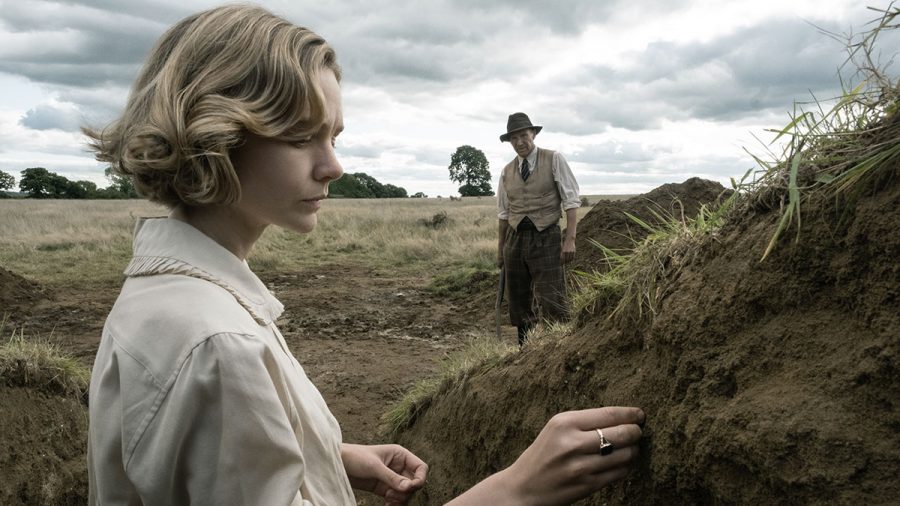Netflix’s ‘The Dig’ dramatically retells an important archeological discovery
February 11, 2021
Netflix’s “The Dig” is an engaging, dramatic retelling of one of the most important archaeological discoveries in human history. Set in 1939 England, the film details the story of the excavators who unearthed an ancient Anglo-Saxon ship at the site of Sutton Hoo. While some parts of the film may be overly dramatized and not completely accurate to the real-life circumstance, “The Dig” gives tribute to the event while compellingly highlighting its themes of death, legacy and discovery.
The film begins by focusing on the affluent but sickly widow Edith Pretty (Carey Mulligan) and her hiring of the novice excavator Basil Brown (Ralph Fiennes) to examine the large tumuli within her estate. Despite the pressures they both face from other characters, the two discover that underneath the estate are artifacts from an Anglo-Saxon civilization, including the remains of an entire buried ship. The drama of the film centers around outside influences impeding the process of the excavation, Pretty’s rapidly declining health and the imminent start of WWII.
The way “The Dig” tells a narrative with focused themes through a real-life occurrence is impressive, with certain scenes throughout the film highlighting the emotional weight behind the excavation and how it relates to the characters’ personal lives and human society as a whole.
While both Basil and Pretty have their own separate character arcs, the unearthing of the Sutton Hoo ship uniquely unites the two of them together and emphasizes the narrative’s themes of legacy and carving a path for the new generation. Both Basil’s journey of discovery and sticking to his family’s legacy and Pretty’s arc of accepting her decline in health and understanding that her life had a meaningful impact on others are engagingly explored through the same unifying event. The costume and set design work of the film are extremely detailed as well and do a great job of capturing the look and feel of London right before WWII.
While “The Dig” does tell the story of Basil and Pretty well, it also flounders when it shifts direction to focus on another excavator involved in the project, Peggy Preston (Lily James), about halfway through the movie. Peggy is another important contributor to the Sutton Hoo excavation in real life, but her character in the film has a large number of creative liberties taken. Her rewritten story also doesn’t entirely relate to the themes of the rest of the film, which makes the shift towards her feel out of place as it drags the film for another 45 minutes.
The acting of the film is solid with great performances from across the whole cast, however, some casting decisions do feel odd and out of place. As one of the starring leads, Carey Mulligan’s casting feels especially off as the 35-year-old actress represents a woman who was around her 50s during the real-life events. Mulligan’s youthful appearance also makes her character’s significant health complications harder to believe.
While some aspects of the film feel disingenuous towards the actual real-life event, “The Dig” is an enjoyable retelling of an important historical discovery. Basil’s contributions towards the Sutton Hoo excavation were only recently properly attributed to him by researchers and this film does a great service toward telling the world of his legacy.









